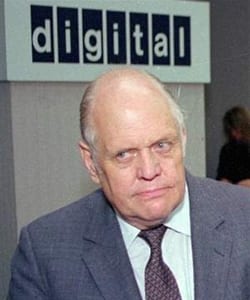The Key Steps Innovation Professionals Should Take in a COVID-19 Environment
Obviously COVID-19 is having an enormous impact on all aspects of our lives, with the scope and scale of business disruption being immense and incredibly challenging. But disruption is what innovation people are generally excellent at responding to, so the question becomes - “how do you and your team support your organisations within this environment?”
Leading Innovation within Government Agencies: What to Drive and What to Avoid
As innovation professionals, we too often look for inspiration from organizations such as Apple, Amazon, Tesla, Spotify, Google, etc. Cultures within these businesses are encourage transparency, experimentation and autonomy resulting in engaged workforce of the best and brightest minds, pumping out game changing products on-schedule, on-budget and on-point. We want that for the organizations that we support. We want to drive those behaviors.
The Role of Innovators at Large Organizations
In-house innovation programs continue to proliferate and our concept of the innovator has evolved alongside them. Now we no longer think of a creative genius sitting alone in their tower coming up with creative ideas. Now, innovators can play a number of different roles within an innovation program beyond idea author. A lot of interest and attention is being paid to this concept, because organizations that are looking to sponsor and train innovation skills at their organization need to understand what skills matter most when it comes to creating meaningful change. After all, it’s an important part of professional development nowadays. Every employee at any organization needs to be able to keep up with the rapid pace of change. So here are a few of the roles that innovators play at large organizations.
Social Product Innovation Challenges: Sustaining Processes
A couple months ago I laid out the framework for the most common challenges companies face as they get started with their social product innovation initiatives. The most common challenges fall into five main buckets – strategy, people and culture, business processes, technology and sustainability. So let’s take a deeper look at typical sustainability challenges and some ideas for overcoming them.
6 steps on How to Achieve Innovation in Outsourcing
There has been a huge amount of growth in the outsourcing industry over recent years, so much so that it has become engrained in the way many large enterprises run their business. As the industry matures and the range of outsourcing services extends to higher value activities, client firms raise the bar regarding their expectations, seeking the delivery of high impact innovation from their vendors.
Engaging Collaborative Innovation’s Losers
Change benefits some more than others. The practice of collaborative innovation, which by design offers transformative change, is no different. In this article innovation architect Doug Collins advises campaign teams on engaging people who find themselves on the losing end of the practice. Ignoring their concerns jeopardizes the initiative.
The Elastic Enterprise: How to Move Beyond Innovation (and Live Happily for a Change)
Innovation, the act of creating novelty, has become omnipresent whereas what we really need to know is how to change enterprises, how to transform them, how to make them Elastic Enterprises, urges Haydn Shaughnessy in this provocative article.
Learning from Asian Innovation
Asian companies are different from Western companies in their approach to innovation. A recent study has identified four generic elements of the Asian approach that might help any Western company think differently and to be more effective in their business creation. In this article Peter Hesseldahl gives a brief overview of the conclusions.
The Great Innovation Challenge of the 21st Century
Global economic challenges that have had a profound affect on businesses will continue to do so indefinitely. This means that businesses must not only innovate in order to survive, but they will need to innovate in new ways to meet the changing needs, expectations and financial situations of their customers.
Is it Time to Rewrite the Innovation Playbook: Ten New Requirements in the Age of Hyperinnovation
In the world of hyperinnovation innovation itself is changing. In place of a monolithic R&D based innovation culture we suddenly have a proliferation of innovation approaches and new pressures on enterprises to innovate. Haydn Shaughnessy and Nick Vitalari argue the innovation playbook needs to be rewritten, and relabelled.
When DEC was the King of Innovation
At one time, Digital Equipment Corporation (DEC) was one of the most innovative companies on the planet. What happened?
Structuring Companies for Innovation and Operations
The appropriate structuring of companies is becoming more and more relevant as a mechanism for managing and enhancing their innovation capability. This article explores the concept of the Viable Systems Model (VSM) of Stafford Beer as a tool to better structure organisations for effective innovation and efficient operation.
Complexity Science and Innovation
What has complexity science to do with innovation management? Quite a few things if you ask Dr. Curt Lindberg of Plexus Institute, NJ, the States. Complexity science is the scientific study of complex systems, systems with many parts that interact to produce patterns of behavior that cannot easily be explained by the behavior of the individual constituent elements. From a business perspective you can use it to better understand the importance of relationships and interactions to your innovation efforts.
Improvisation is key to building a culture of innovation, says Doug Stevenson
By adopting the behaviors and principles of improvisation, organizations can achieve significant and robust cultural change in the direction of innovation, says creativity and improv expert Doug Stevenson.
Innovation and Change: What are you afraid of?
Fear of change can make people resist the best of ideas. Keep this in mind when you innovate!
Reinventing Knowledge Management to Innovate
There has been a shift from the emphasis on what people called the “information value chain” to “knowledge value chain” for quite some time. The environments are shrewd and unpredictable in this world of growing competition and rapid technological progress. The information value chain just served as a database of “best practices” whereas “knowledge value chain” emphasizes on the active sense making of human beings handling business.
Preparing for Tomorrow’s Innovations today
Being the General Manager of TomorrowLab, Steven Peleman knows what is important for the creation of innovation in companies and organizations. Bringing people together outside their companies and helping them to develop new views of their existing innovation organization make a good start. Getting them to take more chances is even better.
Challenges for Innovation in Network Markets
Markets can be quite hostile to new products launched, and in fact they refuse most new products. This hostility to new products can even be stronger in network markets, where all players are interconnected. Read more about the challenges to be addressed when you enter into network markets in this third article in a series of five by Gunjan Bhardwaj, head of Ernst & Young´s Global Business Performance Think-tank.
When no one wants to change: 6 questions that lower the defenses to improving innovation
Why is change so hard? Most people will tell you that it’s because people naturally resist change. I really like Eli Goldratt’s response to this argument: If a very wealthy person that you knew and trusted offered you a huge sum of money, say $50 million, with no strings attached, would you accept it? Before you answer, consider how much that much money would change your life. If you doubt this, just look at the scores of reports on how lotto winners have messed up their lives. They always think it won’t change them, but it always does. Even knowing this, I’d wager the vast majority of us would still accept the money. Some might consult lawyers or accountants, but [...]
To Re-invent Your Company, Reinvent Yourself
Companies are increasingly recognizing that today’s turbulent times require nothing short of continual reinvention. Weathering today’s storm isn’t enough. Companies need to develop repeatable processes that regularly renew their firms before the next crisis hits. This kind of renewal must begin with the leaders themselves.
Why Business Model Innovation Matters
Managers frequently rely on innovation to drive profitable growth. In many industries new products and services are fundamental. However, although product and service innovations are and have been important to firms for decades, competitive pressures and the search for increased profit have pushed business model innovation higher on the priority list.
Innovation strategy: Five steps to make change happen
Here are five steps to help you develop your change strategy based on my work with innovation leaders and intrapreneurs.
Learning about innovation from a bunch of kids
Sometimes the approaches used by kids to solve problems can provide a good model for all of us to follow.
Managing change in an innovative world
Natalie Jenkins explains how adopting a set of creative thinking methods can help to prepare you for today's world of constant change and upheaval.
The Best Strategies for Dealing with Disruptive Innovation
What lessons can you learn about handling disruptive innovation? Author Jeffrey Baumgartner uses several examples from the photography market to highlight successful strategies for dealing with this increasingly common phenomenon.
Ten Top Tips for the Innovative Leader
If you want to drive innovation in your organization, then Paul Sloane has some suggestions to help you succeed.
Creating a Culture of Innovation
Years of cost-cutting and focus on process excellence have created in many firms a culture that is focused on operational excellence and risk avoidance. For innovation to succeed as a corporate objective, the culture must change to accommodate the risk and uncertainty that accompanies an innovation focus. Luckily, several important levers can help you change the culture, as Jeffrey Phillips explains.
Harnessing the energy of change champions
The most successful change and innovation efforts are often accomplished by a change champion, a 'mono-maniac with a mission,' according to Jim Clemmer. Here are some strategies that will help you to support your organization's change champions.










